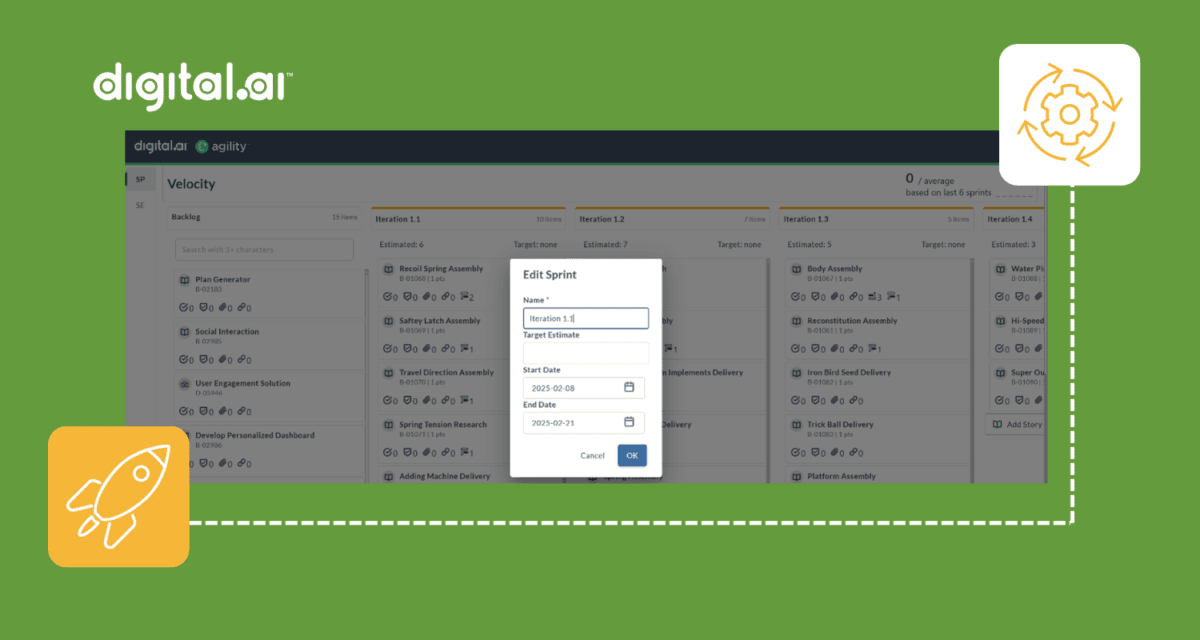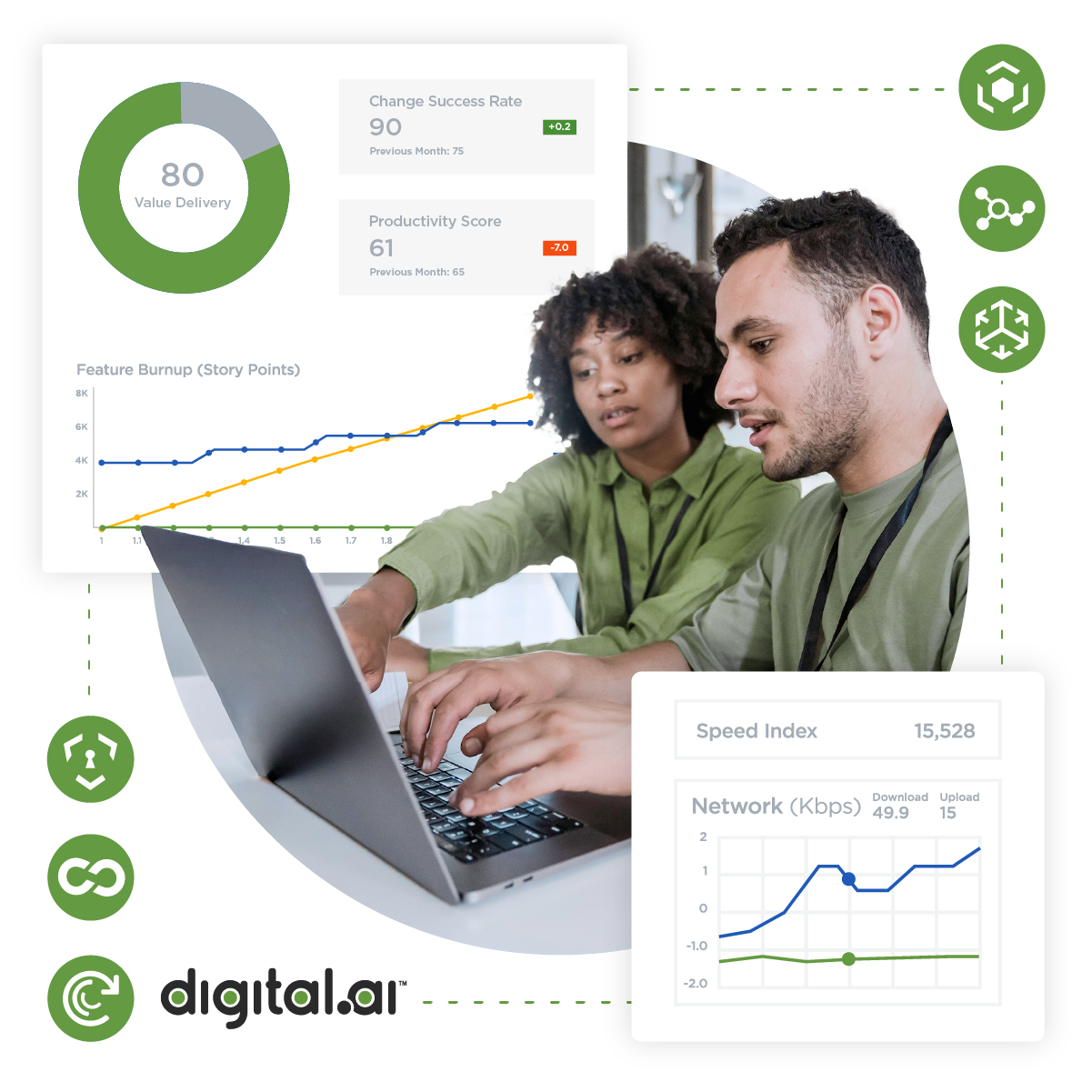Table of Contents
Related Blogs
What is Agile Testing Methodology?
In the past, traditional software development felt like a relay race. Testers only received the baton (the finished product) after the development leg. This meant bugs discovered late caused delays and rework due to siloed processes and teams.
Agile testing throws out the baton and creates a team sprint instead. Testing integrates seamlessly throughout the Agile development lifecycle in short cycles alongside development. Agile testing is like building a house; the plumber doesn’t wait until the entire structure is complete to check the pipes. They are involved as each section is built, ensuring everything works smoothly. This collaborative approach allows testers to identify and fix issues early, fostering continuous feedback and ensuring quality is built-in, not bolted on later. Working as a team throughout the development process helps agile testing deliver high-quality software faster and with greater flexibility.
Principles and Values in Agile Testing
Agile testing is more than a set of practices. It is a philosophy built on the core principles and values of the Agile Manifesto. These principles guide how testers approach their work within the Agile development framework, fostering a collaborative environment prioritizing quality and responsiveness.
Let’s look into the key principles that shape agile testing:
- Individuals and interactions over processes and tools: Agile testing recognizes the importance of skilled and communicative testers. Rigid and predefined processes stifle creativity and hinder collaboration.
- Working software over comprehensive documentation: While documentation is important, agile testing prioritizes speedy and iterative software delivery. Extensive documentation upfront can be time-consuming and may not reflect the project’s evolving nature. Instead, agile testing focuses on creating clear, concise documentation that aligns with the software’s current state.
- Customer collaboration over contract negotiation: Agile thrives on continuous collaboration with stakeholders, including product owners and end-users. This close collaboration allows for early feedback and course correction throughout the development process.
- Responding to change over following a plan: Agile embraces change as a natural part of software development. Detailed, inflexible plans quickly become outdated as requirements evolve. Agile testing emphasizes adaptability, readily adjusting plans and test strategies based on new information and feedback. This allows the team to focus on delivering real customer value.
Understanding the Agile Testing Process
Agile testing is an iterative process unfolding in sprints, typically lasting one to two weeks. Each sprint acts as a mini-development cycle, delivering a functional piece of the software. Here’s a breakdown of each sprint:
- Prioritizing User Stories: The sprint starts with the product owner and development team collaborating to prioritize user stories. These stories represent functionalities the end-users desires and are prioritized based on their value and complexity. This ensures the team focuses on delivering the most impactful features first.
- Test Case Creation and Updates: With user stories prioritized, testers work closely with developers and product owners to create or update test cases. These test cases outline specific scenarios to ensure the defined functionalities work as intended.
- Continuous Integration and Testing: Agile thrives on continuous integration, where developers frequently integrate their code changes into a shared codebase, triggering automated tests. These automated tests run continuously, identifying bugs and regressions early in the development cycle.
- Manual Testing: Beyond Automation: While automation plays a crucial role, agile testing doesn’t neglect the value of manual testing. Testers conduct exploratory to ensure overall software quality.
- Defect Tracking and Reporting: Inevitably, bugs and issues are discovered during testing. Testers meticulously log these defects in a defect tracking system, capturing details like the steps to reproduce the issue and its severity. T
- Regression Testing: After developers fix bugs comes regression testing. This involves re-running previously passed tests to ensure the fix for one issue hasn’t caused unintended consequences in other functionalities.
- Sprint Review and Retrospective: The sprint concludes with a sprint review and retrospective. The team showcases the developed features to stakeholders during the review and receives feedback. The retrospective is a dedicated time for the team to reflect on the sprint, identify areas for improvement in the testing process, and brainstorm ways to optimize their approach for the next sprint.
Benefits of Agile Testing
Agile testing is about more than processes; it’s about reaping significant benefits for both the development team and the final product.
Here’s a closer look at the key advantages of adopting agile testing practices:
- Increased Accuracy and Quality: Traditional testing often happens as a separate phase after development, leading to the risk of discovering major bugs late in the process. Agile testing flips the script by integrating testing throughout the development lifecycle. Early bug detection translates to fewer rework cycles, higher code quality, and a more robust final product.
- Improved Team Collaboration: Agile testing fosters a collaborative environment where testers, developers, and product owners work together as a cohesive unit. Testers are no longer seen as separate entities conducting checks at the end; they become valued partners actively involved in the development process. This close collaboration allows for open communication and a shared understanding of project goals.
- Faster Time to Market: Agile testing’s iterative nature allows for delivering functional software in short sprints. This means users can get their hands on working features earlier, providing valuable feedback that can be incorporated into subsequent iterations.
- Flexible and Adaptable to Changes: Software development is rarely a linear process. Requirements can evolve as user feedback is gathered, and new features might emerge. Agile testing thrives in this dynamic environment.
- Reduced Risk: Proactively identifying and addressing bugs early in the development cycle, significantly reduces the risk of encountering major issues later. This saves time and resources and mitigates the potential for costly rework or delays close to a product launch.
- Enhanced Morale and Ownership: The collaborative nature of agile testing fosters a sense of shared ownership and responsibility for the product’s quality. Testers are no longer solely responsible for identifying bugs; they become active participants in building a high-quality product. This shared ownership can lead to increased motivation and morale within the team.
- Improved Cost Management: Agile testing focuses on early bug detection and continuous feedback, which helps prevent costly rework cycles later in the development process. Catching bugs early minimizes the need for extensive changes to already developed code, leading to more efficient resource use.
- Increased Customer Satisfaction: Iterative delivery allows working features to be delivered early to users, allowing agile testing to provide early feedback and continuous improvement based on user needs. This ensures the final product is aligned with customer expectations and delivers real value.
Core Practices of Agile Testing
Agile testing is more than a philosophy; it’s a practical approach supported by core practices that ensure continuous quality throughout the development process.
Here’s a closer look at these essential practices:
Continuous Testing
At the heart of agile testing lies continuous testing. This practice involves running automated tests frequently, ideally after every code change or commit. These frequent tests act as an immediate feedback mechanism, notifying developers of any regressions or bugs introduced by their changes. Continuous testing empowers developers to work more confidently, knowing their code changes haven’t broken existing functionalities.
Test Automation
Agile testing recognizes the value of human expertise and acknowledges automation’s power. Repetitive test cases that verify basic functionalities are prime candidates for automation. This frees up valuable tester time, allowing them to focus on more strategic activities like exploratory testing, where creativity and critical thinking are crucial for uncovering unforeseen issues. Automated tests also provide a safety net, ensuring core functionalities remain stable as new features are added.
Test-Driven Development (TDD)
Test-Driven Development (TDD) takes a proactive approach to quality. In TDD, developers write unit tests before they write the actual code. These unit tests define the expected behavior of individual code units. The developer then writes code that fulfills the criteria outlined in the tests. This approach ensures the code is built with testability in mind, fostering higher code quality from the very beginning.
Behavior-Driven Development (BDD)
Behavior-driven development (BDD) emphasizes collaboration and a shared understanding of the desired functionalities. In BDD, user stories are written collaboratively, focusing on the system’s expected behavior from the user’s perspective. These user stories then form the basis for acceptance criteria, which define how the system should behave to be considered a success.
Acceptance Test-Driven Development (ATDD)
Acceptance Test-Driven Development (ATDD) builds upon BDD by bringing testers closer to the development process. In ATDD, testers actively create automated acceptance tests based on the user stories and acceptance criteria defined during BDD sessions.
Agile Testing Roles and Responsibilities
In an Agile team, roles and responsibilities are more collaborative:
The Role of a Tester in an Agile Team:
In an Agile environment, testers play a multifaceted role. They work closely with developers and product owners to understand user stories and design a mix of automated and manual test cases to validate the intended user experience. They leverage their expertise in exploratory and confirmation testing to identify both foreseen and unforeseen issues, meticulously document and report bugs, and actively participate in daily stand-up meetings and sprint reviews to provide updates, collaborate on solutions, and identify areas for improvement throughout the development lifecycle.
Collaboration between Developers and Testers:
In an Agile environment, developers and testers foster a collaborative spirit by prioritizing testability from the start. Developers write unit tests and consider code structure with testing in mind, while testers provide feedback on code quality and testability. This synergy is further amplified through pair testing sessions, where developers and testers work together to explore functionalities, identify potential issues early on, and collaboratively refine the overall quality of the software.
Role of the Product Owner in Agile Testing:
In Agile testing, the product owner acts as a bridge between business value and technical implementation. They prioritize user stories based on their impact on the end-users, ensuring the testing team focuses on the most critical functionalities. Furthermore, the product owner collaborates with testers to define acceptance criteria, which become the yardstick for success. Finally, after each testing cycle, the product owner analyzes the results and leverages their business acumen to prioritize bug fixes based on user needs and potential business impact.
Tools for Agile Testing
Several tools can enhance agile testing practices:
- Unit testing frameworks: (JUnit, PHPUnit) allow developers to write unit tests for their code.
- Test management tools: (Jira, TestRail) help manage test cases, track bugs, and report on testing progress.
- Continuous integration (CI) tools: (Jenkins, Travis CI) automate the build, test, and deployment process.
- Test automation frameworks: (e.g., Selenium, Cypress, Digital.ai Continuous Testing) enable automation of web UI testing.
- API testing tools: (Postman, SoapUI) facilitate testing of application programming interfaces (APIs).
- Exploratory testing tools: (Tricentis Exploratory, Applitools) support exploratory testing by recording user sessions and capturing screenshots for bug reporting.
- Collaboration tools: (e.g., Slack, Microsoft Teams) enable real-time communication and collaboration among team members.
Choosing the right tools depends on your specific project needs and team preferences.
Implementing Agile Testing Strategies
Implementing agile testing requires careful planning and execution:
Formulating a Testing Plan:
- Define the testing strategy based on project requirements and risks.
- Identify the types of testing to be performed (e.g., unit, integration, system, acceptance).
- Establish clear acceptance criteria for each user story.
- Estimate the testing effort for each sprint.
Managing Agile Testing Sessions:
- Prioritize test cases based on risk and user impact.
- Allocate sufficient time for testing within each sprint.
- Conduct exploratory testing sessions to uncover unforeseen issues.
- Encourage pair testing to leverage the expertise of multiple testers.
Analyzing Results and Feedback:
- Analyze test results to identify trends and areas for improvement.
- Report on testing progress and communicate findings to stakeholders.
- Use test results to update test cases and improve test coverage.
- Continuously refine the testing strategy based on learnings from each sprint.
Common Challenges in Agile Testing
Agile testing offers numerous benefits but is not without its hurdles. Here’s a closer look at some common challenges Agile teams face and strategies to overcome them:
1. Time Constraints: Living in a Sprint World
Agile methodologies are known for their short development cycles, often called sprints. While this promotes rapid iteration and delivery, it can also strain testing activities. Testers may feel pressure to compress testing into tight timeframes, potentially compromising the thoroughness of their work.
2. Insufficient Testing: Not Leaving a Stone Unturned
The time pressure associated with sprints can lead to the risk of neglecting certain aspects of testing. Less critical functionalities or non-functional aspects like performance or usability testing might be sacrificed to meet deadlines.
3. Communication Gaps: Bridging the Silos
Effective communication is paramount in Agile testing. Testers, developers, and product owners must be on the same page to ensure testing aligns with requirements and priorities. However, communication breakdowns can occur due to busy schedules or misunderstandings.
4. Adapting to Changing Requirements: When the Target Moves
One of the core principles of Agile is the ability to adapt to changing requirements. While this flexibility benefits the final product, it can pose challenges for testing. Testers need to be adaptable and adjust their testing strategies as requirements evolve throughout the development process.
Overcoming Agile Testing Challenges
Here’s how to address common challenges in agile testing:
1. Building a Culture of Continuous Improvement:
- Regular Evaluations and Adaptations: Schedule regular evaluations to assess the effectiveness of the testing process. Consider factors like test case coverage, bug detection rates, and team morale. Based on these evaluations, make adjustments to optimize testing strategies for future sprints.
- Retrospectives: Learning from Each Sprint: Encourage open and honest discussions to identify areas for improvement and implement changes as needed.
2. Communication: The Cornerstone of Collaboration
- Open Communication Channels: Encourage open and transparent communication, allowing testers to readily share feedback on code quality, testability, and potential risks.
- Daily Stand-up Meetings–Keeping Everyone in Sync: Daily stand-up meetings are essential for maintaining team alignment. These brief meetings provide a platform for testers to communicate their progress, highlight any roadblocks, and ensure everyone is aware of upcoming testing activities.
- Regular Reviews–Addressing Concerns and Promoting Transparency: Schedule regular reviews to discuss test results with developers and product owners. This fosters transparency, allows for collaborative problem-solving, and promptly addresses concerns.
3. Leveraging Technology for Efficiency and Effectiveness
- Automation: Freeing Up Testers’ Time: Embrace automation tools to streamline repetitive test cases.
- Collaboration Tools–Bridging the Gaps: Explore tools that enhance communication and collaboration within the team. Utilize shared testing platforms for managing test cases, tracking bugs, and facilitating discussions.
- Investing in Training–Staying Ahead of the Curve: The Agile testing landscape is constantly evolving. Invest in training opportunities for your testers to ensure they stay up-to-date with the latest tools, techniques, and best practices. This empowers them to adapt to new challenges and contribute more effectively to the team’s success.
Agile Testing in Large-scale Organizations
Implementing agile testing in large organizations requires additional considerations:
- Scaling the Agile Framework: Large organizations might adopt scaled agile frameworks like SAFe or DAD to manage complex projects with multiple teams.
- Centralized Testing Practices: Establish centralized guidelines and best practices for agile testing across the organization while allowing teams flexibility within the framework.
- Tool Standardization: Consider standardizing on a set of agile testing tools for better integration and knowledge sharing across teams.
Agile Testing in Small Teams
Small teams often benefit from the simplicity and flexibility of agile testing:
- Reduced Overhead: Smaller teams typically have less bureaucratic overhead, allowing for faster decision-making and adaptation within the testing process.
- Closer Collaboration: Close proximity and open communication channels foster better collaboration between testers, developers, and product owners.
- Streamlined Testing: Smaller teams can often streamline the testing process by focusing on the most critical functionalities.
Agile Testing and DevOps
Agile testing integrates seamlessly with the DevOps approach, emphasizing collaboration between development, operations, and security teams. This collaboration ensures continuous delivery of high-quality software:
- Automated Testing Pipelines: Integrate automated tests into the CI/CD pipeline to provide continuous feedback throughout the development lifecycle.
- Shared Responsibility: DevOps fosters a shared responsibility for quality, where developers and testers work together to ensure a smooth flow from development to deployment.
- Security Integration: Security testing can be integrated into the agile testing process to ensure secure software development practices.
Are you ready to scale your enterprise?
Explore
What's New In The World of Digital.ai
Digital.ai and Packaged Agile Partner to Help Enterprises and Agencies Reclaim the Value of Agile
Digital.ai and Packaged Agile: A Strategic Partnership That Reconnects Agile Delivery with Real Business & Mission Outcomes to be More Efficient & Effective
Plan, Execute, and Measure – All in One Environment: Digital.ai Agility 25.0 Feature Announcement
Discover what’s new in Digital.ai Agility 25.0 – updates to Rooms 2, OKR management, and more!
Better Together: Unlocking Endless Possibilities For Our Customers
This Valentine’s Day, join us in celebrating the unique stories that make our Digital.ai customers special!





